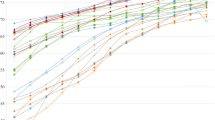Abstract
The population of the countries bordering on the Mediterranean Sea will grow to 685 million in 2050, according to the latest projections (middle variant) of the United Nations, from 188 million in 1950. Trends of mortality, fertility and migration are briefly delineated, as well as their differential impact in the countries of the European, Asian and African Rims. The paper discusses the human impact of population growth on the region, with particular reference to urbanization, population distribution along the coastline, and mobility.

Source: United Nation

Source: United Nation

Source: World Bank Note: The gross national income (GNI) per capita, PPP (current international $) is an economic indicator that measures the average income of individuals. It takes into account the purchasing power party (PPP) which adjust for differences in the cost of living between countries

Source: United Nations environment program/Mediterranean action plan and plain Bleu, state of the environment and development in the Mediterranean. Nairobi, 2020

Source: United Nations environment program/Mediterranean action plan and pan bleu, state of the environment and development in the Mediterranean. Nairobi, 2020




Source: United Nations environment program/Mediterranean action plan and pan bleu, state of the environment and development in the Mediterranean. Nairobi, 2020, p. 60
Similar content being viewed by others
References
Molina LT (2021) Introductory lecture: air quality in megacities. Faraday Discussions
Smiraglia D, Giuliani C (2023) The increasing coastal urbanization in the Mediterranean environment: the state of the art in Italy. Land 12(5):1017
United Nations Environment Programme/Mediterranean Action Plan (UNEP/MAP) and Plan Bleu (2020) State of the environment and development in the Mediterranean, Nairobi
United Nations (2021) Global population growth and sustainable development, New York
United Nations (2022) World population prospects-population division, revision
Author information
Authors and Affiliations
Corresponding author
Ethics declarations
Conflict of interest
The author declares no conflict of interest.
Additional information
Publisher's Note
Springer Nature remains neutral with regard to jurisdictional claims in published maps and institutional affiliations.
This peer-reviewed tutorial paper belongs to the Topical Collection motivated by the Conference “The Mediterranean System: a Hotspot for Climate Change and Adaptation” organized in Rome at the Accademia Nazionale dei Lincei on March 21–22, 2023.
Rights and permissions
Springer Nature or its licensor (e.g. a society or other partner) holds exclusive rights to this article under a publishing agreement with the author(s) or other rightsholder(s); author self-archiving of the accepted manuscript version of this article is solely governed by the terms of such publishing agreement and applicable law.
About this article
Cite this article
Livi-Bacci, M. The crowded rims of the Mediterranean sea. Rend. Fis. Acc. Lincei (2024). https://doi.org/10.1007/s12210-023-01220-x
Received:
Accepted:
Published:
DOI: https://doi.org/10.1007/s12210-023-01220-x




